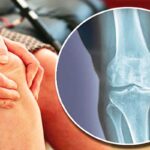
Physical therapy is a form of healthcare that aims to help people restore, maintain or improve their physical abilities, functions and quality of life through the use of exercises, manual therapy and other modalities. It is a highly beneficial treatment option for people with orthopedic conditions, which are injuries, diseases or conditions that affect the musculoskeletal system, including bones, muscles, ligaments, tendons and joints. In this article, we will discuss the benefits of physical therapy for orthopedic conditions and how it can help people overcome pain, improve mobility and regain their independence.
- Pain Relief-
One of the primary benefits of physical therapy for orthopedic conditions is pain relief. Pain is a common symptom of many orthopedic conditions, such as osteoarthritis, tendonitis and sprains and it can be debilitating, affecting a person’s ability to perform daily tasks and enjoy life. Physical therapy can help relieve pain by using various techniques, such as manual therapy, stretching, and exercises, to reduce inflammation, improve blood flow and promote healing. For example, a physical therapist may use soft tissue mobilization to improve the flexibility of the muscles and reduce pain or they may use heat or ice therapy to reduce inflammation and soothe the affected area.
- Improved Mobility and Function-
Another benefit of physical therapy for orthopedic conditions is improved mobility and function. Many orthopedic conditions can restrict movement and limit a person’s ability to perform daily activities, such as walking, reaching, and lifting. Physical therapy can help improve mobility and function by using exercises and stretches to increase the range of motion of the affected area, strengthen the muscles, and improve balance and coordination. For example, a physical therapist may prescribe exercises to help a person regain strength and mobility in their knee after a knee replacement surgery or use balance exercises to improve a person’s ability to walk without falling.
- Faster Recovery-
Physical therapy can also help people recover faster from orthopedic conditions. Many orthopedic conditions require surgery or other medical interventions, which can be followed by a long period of rehabilitation. Physical therapy can help speed up the recovery process by providing targeted exercises and modalities that help the affected area heal faster and regain its function. For example, a person recovering from a rotator cuff tear may benefit from physical therapy to strengthen the muscles around the shoulder joint and improve range of motion, which can help them regain function faster.
- Avoid Surgery
Physical therapy can also help people avoid surgery or delay the need for surgery. Many orthopedic conditions, such as lower back pain and knee osteoarthritis, can be effectively managed with physical therapy. By addressing the underlying cause of the pain and using targeted exercises and modalities, physical therapy can help reduce pain, improve function, and delay the need for surgery. For people who do need surgery, physical therapy can help prepare them for the procedure and improve their outcomes after surgery.
- Customized Treatment-
One of the greatest benefits of physical therapy for orthopedic conditions is that it provides customized treatment for each person’s unique needs. Physical therapists are highly trained healthcare professionals who specialize in musculoskeletal conditions, and they have the knowledge and expertise to develop individualized treatment plans that are tailored to a person’s specific condition, goals and abilities. This personalized approach to treatment helps ensure that people receive the care they need to achieve their goals and improve their quality of life.
- Prevention of Future Injuries-
Finally, physical therapy can help prevent future injuries or recurrence of existing injuries. By addressing the underlying cause of the injury or condition and developing a targeted exercise program, physical therapy can help improve strength, flexibility and balance, which can help reduce the risk of future injuries.
- Physical Therapy Can Prevent Surgery-
In some cases, physical therapy can even prevent the need for surgery. If a patient is experiencing pain or limited mobility due to an orthopedic condition, physical therapy may be prescribed as a first-line treatment before considering surgery. Physical therapy can help improve strength, flexibility and range of motion, which can often alleviate pain and improve function. By addressing the root cause of the problem, physical therapy can prevent the need for surgery in some cases.
For example, a patient with a rotator cuff tear may be advised to undergo surgery to repair the tear. However, physical therapy may be recommended first to strengthen the muscles around the shoulder joint and improve range of motion. If the patient responds well to physical therapy, surgery may be avoided altogether.
- Physical Therapy Can Improve Overall Health-
Physical therapy isn’t just beneficial for orthopedic conditions. It can also have a positive impact on overall health and well-being. Physical therapy can help improve cardiovascular health, reduce the risk of chronic diseases such as diabetes and heart disease and promote overall physical and mental well-being.
By engaging in regular physical activity, patients can improve their fitness level, reduce their risk of chronic diseases and improve their quality of life. Physical therapy can also help patients manage stress, improve sleep quality and boost mood and self-esteem.
- Conclusion-
Physical therapy is a highly beneficial treatment option for orthopedic conditions. It helps individuals recover from injuries, reduce pain and improve overall physical function and mobility. Physical therapy interventions such as therapeutic exercise, manual therapy, and modalities can be customized to address the specific needs of each patient, making it an effective treatment option for a wide range of orthopedic conditions.
Dr Ashish Suryawanshi, a renowned orthopedic surgeon, emphasizes the importance of physical therapy in treating orthopedic conditions. He recognizes the role of physical therapy in improving patient outcomes and helping them return to their normal activities. He recommends that individuals seek the guidance of a licensed physical therapist for proper evaluation and treatment of their orthopedic conditions.
Overall, physical therapy is a safe, non-invasive and effective treatment option for orthopedic conditions that can significantly improve a patient’s quality of life. By working with a skilled physical therapist, individuals can regain function and mobility, alleviate pain and improve their overall health and well-being.




